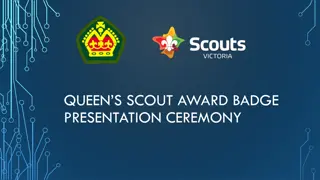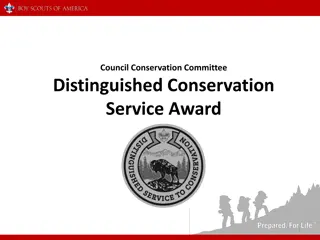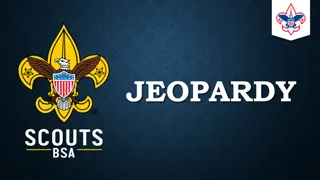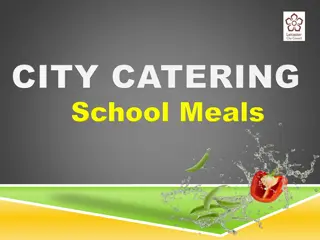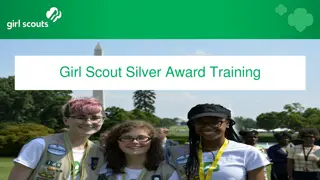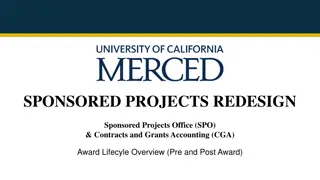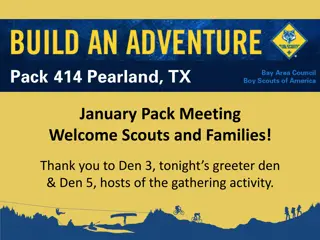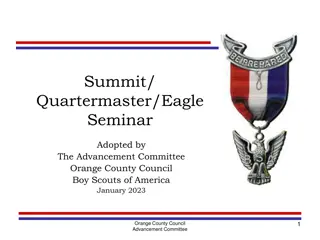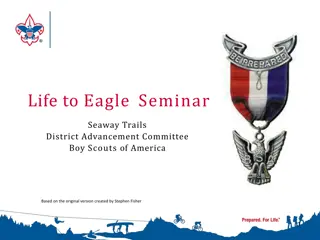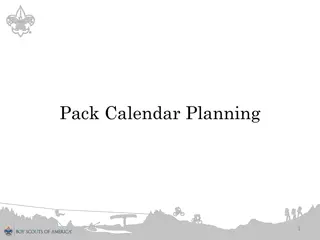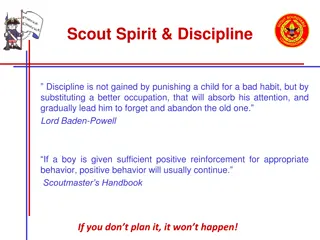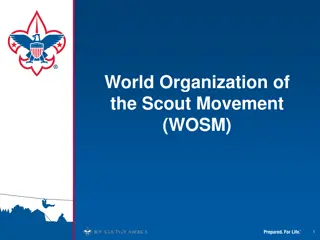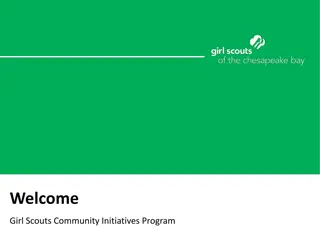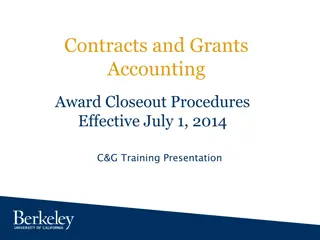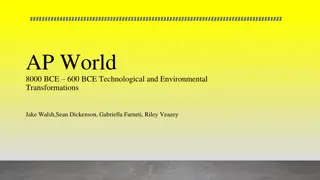Girl Scout Bronze Award Training Steps and Guidelines
The Girl Scout Bronze Award Training provides a structured approach for girls to earn their Bronze Award by engaging in activities that benefit their community. The training involves steps such as going on a Junior Journey, forming a team, exploring the community, choosing a project, planning, and execution. A minimum of 20 hours is recommended to earn the award, with options for both troop and solo models. The process includes creating a community map to identify needs and resources for their Take Action Project.
Download Presentation

Please find below an Image/Link to download the presentation.
The content on the website is provided AS IS for your information and personal use only. It may not be sold, licensed, or shared on other websites without obtaining consent from the author.If you encounter any issues during the download, it is possible that the publisher has removed the file from their server.
You are allowed to download the files provided on this website for personal or commercial use, subject to the condition that they are used lawfully. All files are the property of their respective owners.
The content on the website is provided AS IS for your information and personal use only. It may not be sold, licensed, or shared on other websites without obtaining consent from the author.
E N D
Presentation Transcript
Overview of the Bronze Award Step One- Go on a Girl Scout Junior Journey Step Two- Build your Girl Scout Bronze Award Team (3-5 girls) or decide to go solo Step Three- Explore your community Step Four- Choose a Girl Scout Bronze Award project Step Five- Make a plan Step Six- Put your plan in motion Step Seven- Spread the word 2
Step 1- Go on a Junior Journey Choose either: o Agent of Change o Get Moving! o aMuse 3
Once you have completed your Girl Scout Junior Journey it is suggested that the minimum number of hours for earning your Girl Scout Bronze Award is 20 hours. 4
Step 2 Build your Girl Scout Bronze Award Team Troop Model: Your Girl Scout Junior Troop Each girl must play an active role in choosing planning and developing the team s Take Action Project Partner with others in the community to complete your project Solo Model: Create and implement a project on your own Partner with others in your community (friends, neighbors, and business owners) in order to earn your award 5
Step 3 Explore Your Community Now that you have begun to think about issues that concern you, it s time to do some exploring to find out what your community needs are and where your areas of interest and the community overlap. 6
Now that youve listed your communities its time to map them: A Community Map- is a drawing that shows the community s needs and resources, including contacts who might help you when you start working on your Take Action Project The key to making a good community map is observation 7
Getting started with your Community Map Take a walk through your neighborhood, school, or town Observe all the different aspects of your community while you shop at stores, gather at your Troop meeting place, or go to school (Tip: go back to your Journey(s) for more ideas about spotting community needs) 8
Observation List Observation What do you see and hear around you? Here are ideas for what to look out for. Maybe We Could Possible project ideas to make a difference Add fun decorations that are also green, and figure out how much energy we use during our meetings. Our Girl Scout meeting space isn t very green, and we d also like to make the space more fun for younger Girl Scouts. Add your own what else do you observe in the course of a day in your life? 9 Footer goes here
Now its time to talk to people to get in-depth information about community issues. Start by talking to people you know o Neighbors or teachers Ask them to introduce you to others in your community o Business owners, school officials, religious leaders, council members, police officers, etc 10
Always be safe when you talk to new people: Discuss safety tips with your troop/group volunteer and family Always go with a friend or team member When going on line, take the Girl Scout Internet Safety Pledge at: o www.girlscouts.org/internet_safety_pledge.asp Never give out personal information on the internet 11
Community Contact List Organization Community Contact Contact Information How they can help 12 Footer goes here
Step 4 Pick Your Take Action Project You ve come a long way to get to this point!!! 13
Whether you are working solo or on a team before you pick your project you will need to: Review your Issues Chart, Observation Chart and Community Map Choose a project based on what matters most to you or where you think you can create some positive change (Tip: if you are having a hard time deciding, write a pro/con list for each choice) Narrow your focus on one aspect of your issue if your issue is big and complicated it might be a good idea to Remember you can always go back to your Journey(s) for project ideas and examples Make sure everyone is clear about what you want to do and why if you are working with a team 14
Issues Chart Issues that concern you Why is it important to you? How does this issue effect your community? 15 Footer goes here
Answer the following: What is my/our project? Why does it matter? Who will help? 16
Think about the following: Which of your leadership skills do you think you ll use as work on your Take Action Project? How will these skills help you better understand who you are and what you can do? How will you live the Girl Scout Promise and Law while earning your Girl Scout Bronze Award? 17
Step 5 Make a Plan Now that you ve chosen a project, it s time to make a plan!!! 18
Before You Start: What steps do we need to take to reach our goal? What special talents can each girl use to make the project a success? What did we learn when we earned our Girl Scout Junior journey awards that will help us make sure this project runs smoothly? Do we know enough to get started or do we need more background information? Where can we get that information? Which groups or organizations can we work with? Who can we ask for help? How can we get other people involved? What supplies will we need? How will we earn money for our project, if necessary? How much time do we need to finish our project? Is that timeline realistic? 19
Make It Last: You ll be investing a lot of time on your Take Action Project, so you ll want to develop it in a way that it keeps going even after you re gone!!! (Tip: a simple, clear, focused, and well thought out plan can often be more SUSTAINABLE than taking on a huge project) 20
Sustainable Projects last after your involvement ends, is long lasting or continuous; not a one shot deal: Take Action Projects Address the root (main) cause of an issue Create long term impacts (lasting results) that can be measured by the number of people helped, the number of people involved, or the reduction in the community need Include provisions to ensure sustainability long after you have finished the project Creates a lasting change Is NOT a one time event Community Service Projects Address an immediate need in the community by making the community better for some people, at that moment Address the issue for only a short period of time Does not include provisions to ensure that the service is long lasting or continuous o Organizing a book or clothing drive o Painting walls to cover up graffiti o Holding a one-time march or fair to highlight a community 21
Two examples of SUSTAINABLE Take Action Projects: 22
T.A.P. #1 Problem: Kids can t walk to school safely because there aren t any sidewalks. Root Cause: Lack of planning when the roads were built. Solution with long-term impact: Create a petition asking that a sidewalk be built, get local residents to sign it, and present it to the city council. Making the Solution Sustainable: o Once the sidewalk is built, it will be in place for years, offering a safe route for future generations. o You may need to encourage kids to change their habits and walk that can be a fun group activity. 23
T.A.P. #2 Problem: Children in homeless shelters often struggle in school. Root Cause: Lack of stability and family resources, both financial and emotional. What could be a solution with long-term impacts? How could you make the solution sustainable? 24
T.A.P. #2 Possible Answers Solution with long-term impact: Work with a local homeless shelter and school to establish an ongoing tutoring program that matches student volunteers with children in the shelter. Making the solution sustainable: Work with the school and shelter to find adult staff members who will continue to coordinate the program. Establish a transition tradition, such as an end-of-school-year party, where potential new student volunteers can meet current volunteers and people in the homeless shelter. 25
Find a Project Advisor: Your project advisor is an expert who can answer specific questions about your issue. (Tip: look at your list of the people you met while researching issues) 26
Make a Global Connection: Think about others who may have worked on the same problem in the past, or check the Internet to see how others around the globe deal with your issue. 27
Take One Last Look: Take a step back and look at your project one more time Do you need to narrow your focus a bit more or shift your approach in order to make the project work? Ask others for feedback, especially your troop/group volunteer (Tip: remember to be open to new ideas and suggestions, you may need to rethink certain parts of your project.) 28
Step 6 Put Your Plan Into Motion It s time to get started!!! 29
Your project needs to involve action by you and your Bronze Award Team (if you have one), from the planning stages all the way to earning the Girl Scout Bronze Award. Build a list of what you ll need to do, how it can be done, and who will be doing what (remember you are a team and one or more girls can volunteer for each task), and when each task needs to be finished. 30
Make a plan chart: Who will do it? What is the Task? How will the task be done? When will it be done? Monique Research how a petition is presented to the city council Talk to a council member or the mayor September 7 31 Footer goes here
When your steps are identified and your plan is set DO IT! Remember to keep a record as you go by taking photos, shooting video, or making a scrapbook. This will help make it easier to share your story when you are through. Your project must be completed no later than September 30th (Fall) of your 6thgrade year. 32
Step 7 Spread the Word Congratulations, you have earned the highest award for a Girl Scout Junior the Girl Scout Bronze Award!!! 33
Reflect: Take the time to reflect on all of your hard work. What did you discover about yourself? What did you learn from others who worked to solve the same problem? What skills did you gain? What impact did your T.A.P. have on your community? How will it go on past your involvement? How did you live the Girl Scout Promise and Law? 34
Share Your Story: Create a Website or blog about what you have learned and how your project will help your community. Log on to some web sites where you can share your story: o World Association of Girl Guides and Girl Scouts: www.wagggs.org/en/projects Taking if Global: www.tigweb.org Do a presentation for a younger group of Girl Scouts 35
Notify Council of your Achievement Fill out the Recognition Request Form After the notification form has been returned to Council you will receive a congratulatory letter from the Council CEO. Your leader will receive on your behalf, a certificate of achievement which is to be presented to you at your troop or service unit Court of Awards, special meeting, or celebratory event. Your leader may also choose to have the certificate presented at the council s annual council-wide recognitions ceremony. 36
Annual Council Higher Awards Recognitions Girl Scouts Heart of the South will hold a council-wide recognition event each year for higher award recognitions. Troops who wish to be recognized during the event must submit their Recognition Request Form by March 31st. This deadline has no affect on local Troop or Service Unit spring recognition deadlines and is put in place in order to prepare materials and presentations for the council-wide recognitions. Troops that haven t completed their projects by March 31stwill be recognized during the council recognitions the following year. Absolute Final deadline to earn the Bronze Award is September 30th(fall) of your 6thgrade year. 37
Remember to thank all the people who helped you along the way, from the people you interviewed to those that drove you around town! They ll be proud to know they helped make it happen. 38
Questions? Contact your Higher Awards Council Liaison: Jenny Jones - jenny.jones@girlscoutshs.org or 662-350-6041 39




